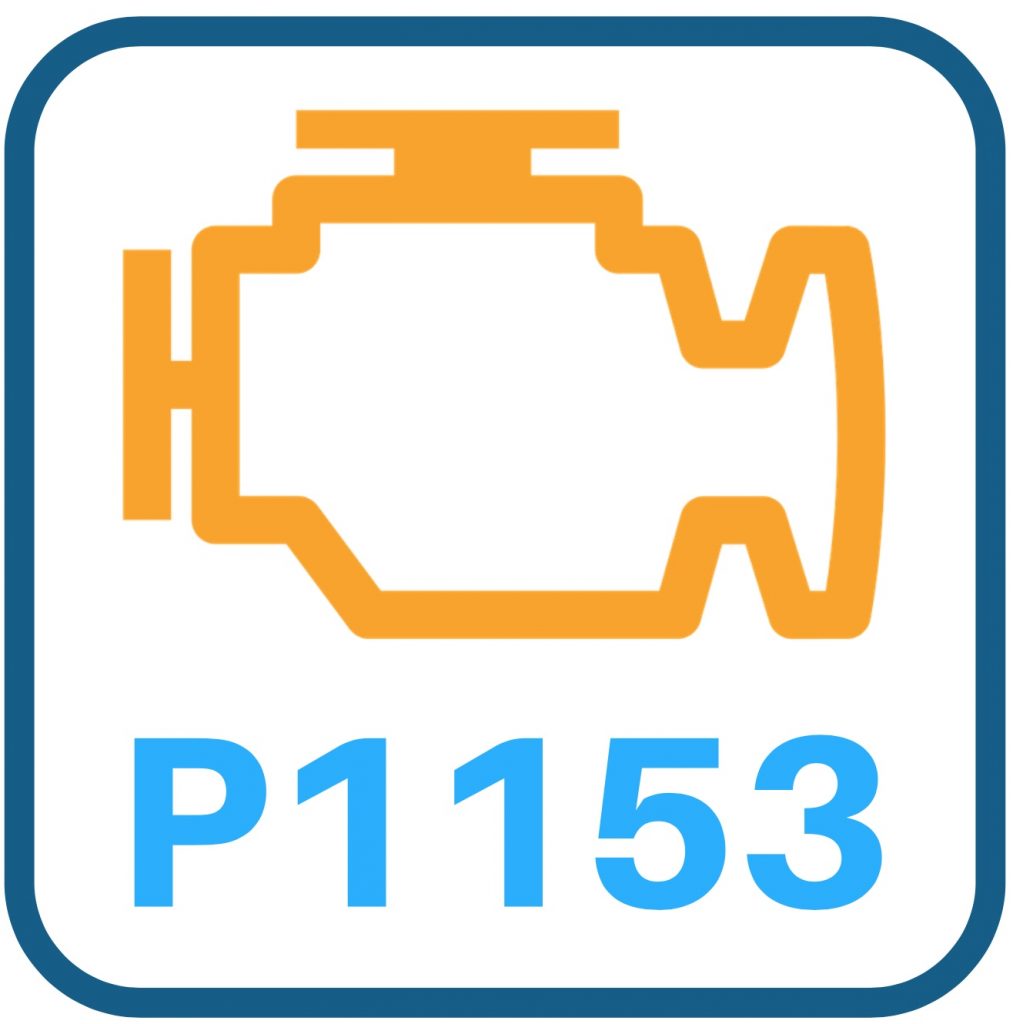P1153 is not a very common diagnostic trouble code. It can have different meanings depending on the manufacturer in question. For the GMC Sierra, it means:
P1153:HO2S Insufficient Switching (Bank 2, Sensor 1)
As long as your scanner confirms that the code is for insufficient switching of the heated oxygen sensor, you’re good to go.
P1153 Meaning

In the standard definition of P1153, there are three separate sections. HO2S, Insufficient Switching, and Bank 2 Sensor 1.
HO2S
While your Sierra’s exhaust system can have many oxygen sensors, the first in line is the most important for metering the air/fuel ratio and keeping the engine running efficiently.
Insufficient Switching
As stated above, your engine’s computer (known as the ECM, or PCM) monitors the air-fuel ratio using the heated oxygen sensor.
It’ll monitor the oxygen sensors in closed-loop operation for 90 seconds to determine if there is anything wrong with them. It does this by counting the number of times the oxygen sensors switch back and forth between rich and lean cycles.
When there is an insufficient number of switches between rich/lean and lean/rich, the GMC Sierra will throw P1153.
Bank 2 Sensor 1
The term “bank” refers to a row of cylinders. So, the amount of cylinder heads a vehicle has determines the number of banks (it can only be one or two).
P1153 can ONLY appear on engines with two banks. So, you’re going to need to determine which side of the engine is bank 2 in your Sierra.
While it is annoying to have to find bank 2, having two banks is nice since we can use the “swap test” to diagnose P1153 later. The swap test will allow you to eliminate the heated oxygen sensor as a possible cause of P1153.
Now that we know what P1153 means and how to find the oxygen sensor, we can begin to diagnose it in earnest.
GMC Sierra P1153: Symptoms
More often than not, the check engine light is the only symptom that you will experience with P1153. Although it’s not unheard of for a vehicle to experience:
- Rough Idle
- Loss of Power
- Black Exhaust
GMC Sierra P1153: Causes + Diagnosis

Here’s a pretty solid procedure for diagnosing a bad oxygen sensor. If you aren’t good with a code scanner, start with section 3, swap test.
1. Capture the Short/Long Term Fuel Trim Values
If you happen to have access to a scan tool, you can use it to capture the short and long-term fuel trim values. You’ll need to make sure that the engine is warmed up before you do this.
Doing this will help you determine if the O2 sensor operates within spec any looking under the hood. You’ll need to compare the values that you capture with your tool with the values GMC specifies.
While this isn’t a skill most DIY mechanics have, the concept is simple, and you can learn enough to use fuel trim to your advantage by watching this 11-minute video (it’s worth it).
2. Check the Wiring Harness at the O2 Sensor

The bank two sensor one oxygen sensor has a tough life. It is right there on the hot exhaust; it also has to deal with a lot of engine vibration. The wiring harness to the sensor will fail more than almost any other wiring in your Sierra.
Check to see if the wiring is burnt or frayed. Make sure that the pigtail that plugs into the sensor is snugged in tight and has no damage itself. You can do this pretty quickly with a flashlight. You can usually see this oxygen sensor without having to take anything apart.
You can use a multimeter to determine if there’s a short or open circuit. This article can make you an expert on the subject in no time.
3. Swap Test (Optional V6, V8 Only)
Since your Sierra has a V-8 or V6 engine, you can do something called the swap test. Basically, it involves removing the bank one sensor one oxygen(B1S1) sensor and replacing it with the bank two sensor one sensor(B2S1).
Here’s how to do the swap test:
- First, clear the DTC codes with your scanner.
- Swap the Bank 2 Sensor 1 O2 sensor with the Bank 1 Sensor 1. They’ll be on or right after the exhaust manifold on each side of the engine.
- Run the engine until the check engine light comes back on.
- If the code changes to P1133 (which indicates the O2 sensor on Bank 1 is insufficiently switching), that is proof enough that your Sierra needs a new O2 sensor.
- If the code remains P1153, you’ll need to continue pursuing your diagnosis, knowing that both O2 sensors are working fine.
4. Exhaust/Vacuum Leaks
Often a worn or brittle vacuum line will allow unmetered air into your Sierra’s engine. When this happens, it creates a lean condition.
You can test for a vacuum leak around the vacuum lines and the intake manifold. A common method is to spray carb cleaner around the intake/vacuum lines. When the spot is found, the engine will rev higher with no throttle input.
Obviously, carb cleaner is super flammable. So be CAREFUL. Make sure you have a form of fire suppression available to you.
An exhaust leak can redirect the gasses that are supposed to be passing over the O2 sensor. This can leave it with a flat curve, which can throw P1153.
Conclusion
A bad oxygen sensor is the most common reason that your GMC Sierra will have P1153. However, there can be other issues that cause this code as well.

